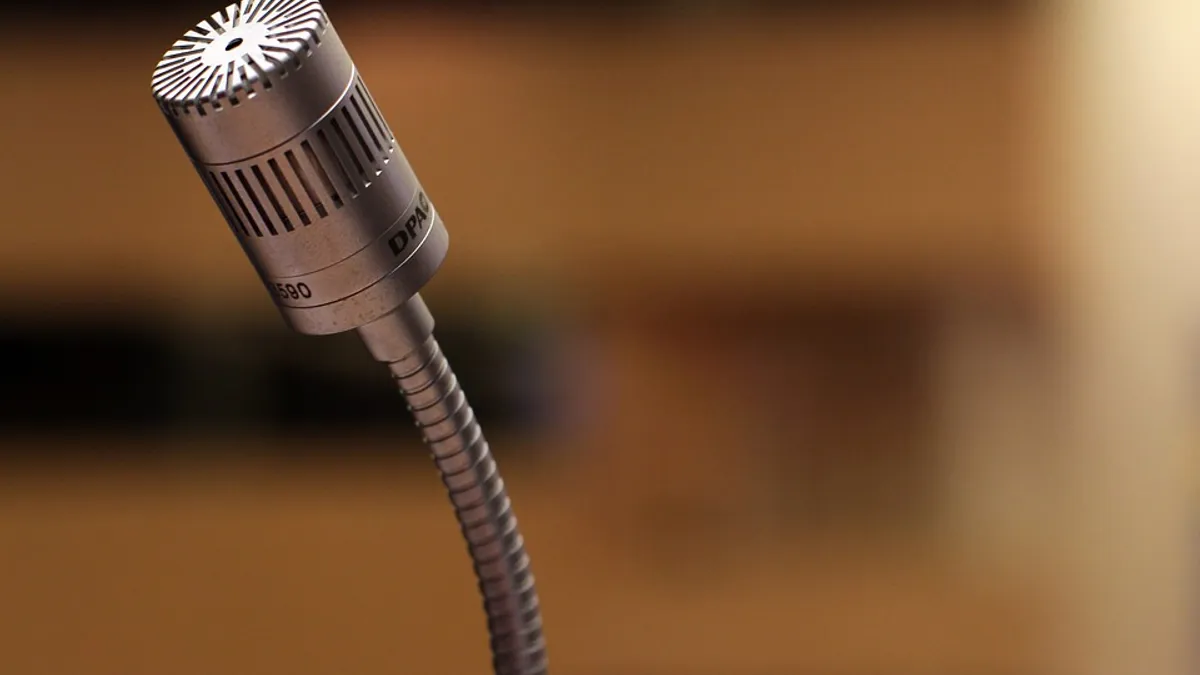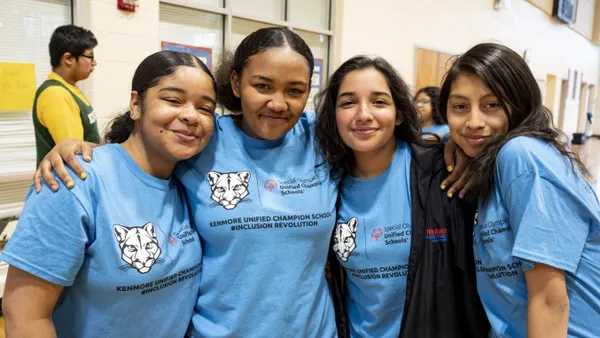WASHINGTON — As education policy continues to evolve and policymakers continue to debate what gets implemented, officials are increasingly acknowledging a key piece of the puzzle: students. And that’s not just as the individuals who stand to be affected by a particular policy, but, more importantly, as people who should play a part in creating it.
Across the nation, at least 20 U.S. states and territories have some form of student representation on their state board of education, and at least seven have a student advisory council that provides input on policy decisions. At a city or district level, this number likely totals dozens of places where educators are bringing students to the table in working to improve their experiences at school.
During a Monday morning session at the National Association of State Boards of Education (NASBE) conference in Washington, D.C., panelists and state board representatives — some of whom were students — argued that gaining perspective from those in the classroom is key to paving the way for good policy, laying the groundwork for attendees to make this happen in their states.
“It’s kind of crazy that for so long, the people who think they know what’s happening aren’t actually in schools,” said panelist Tatiana Robinson, who, in addition to being a high school senior, is serving her second term as a student representative to the District of Columbia State Board of Education. “But times have changed … and students should be involved.”
‘I make a difference’
In D.C., two students are members of the state board of education: Robinson and first-year representative Marjoury Alicea, a high school senior at a local charter school. Both youth leaders acknowledged the advantages this system brings to both the schools and to their peers.
“It gives [the board] a chance to know what we think, [and] my peers put trust in me to amplify what we think,” Robinson said. “Students tell me I make a difference.”
Alicea added, ““Students are the ones living through it and dealing with it every single day,” adding that as a Latinx student, she wants to represent her community.
So proud our @DCSBOE student representatives @thetatiana_ and Marjoury Alicea. This morning, they spoke at the @NASBE Legislative Conference about the power of students on boards around the USA. #NASBELegCon @balloudc @CapitalCityPCS pic.twitter.com/VlWauBkaiN
— Ashley C. MacLeay (@AshleySBOE) April 8, 2019
Mississippi is one of the 20 states and territories that includes students on its state board of education. State board member John Kelly, who spent two years serving as its chair, said it’s important to “give students the microphone" and involve them in creative thinking. He added that this is another vehicle to boost leadership skills and provide a place to ensure "students are equipped to effectively serve."
“Giving students a microphone is no different from when we saw women asking for the microphone or civil rights leaders asked for the microphone,” Kelly said. “It all represents a change, and people have to get comfortable with that change.”
The change reflects more attention to creating positive school climate, bridging social-emotional learning and academics, and improving the school experience for students and staff members. Educators are increasingly realizing the power of student input. Involving students in the process — through monthly meetings with the student council, creating a student advisory board, or even hosting roundtable discussions — can make efforts to improve school climate more effective.
Crafting the system
While all the panelists said having student representatives was important in policymaking, they suggested there are still areas where the process could be improved. For example, students typically have to undergo an application and selection cycle before assuming such a leadership position, but a lofty GPA requirement can deter many students – and the perspectives that they would bring — from being part of the process.
In addition, many boards record students’ votes, but they don’t count in the final tally, and Robinson noted that if students’ opinions were weighed, some D.C. board votes would have swung the other way. Martha J. Harris, a member of the Maine State Board of Education, added that depending on the state, a student representative may not be paid for their service — and that should change.
"That becomes an equity issue," she said.
Equity, the speakers said, also means promoting diversity among student officials and getting feedback from more than just those who regularly speak up. District and school administrators, as well as staff members, can participate by sending out surveys, asking for student feedback and hosting regular discussions that give others a safe space to share what's on their minds. Or they can create new, more innovative ways to garner these voices.
‘If you don’t have a student voice, go get it’
In the case of some states, statutes block students from getting seats at the table. And while the panelists’ experiences mainly came from the state level, other officials can look to implement similar structures for their own decision-making groups.
Whether it's a district school board, a local education committee or a school-level roundtable discussion with parents and other stakeholders, administrators, in many cases, have the power to get students involved and have both groups learn from each other along the way.
“If you don’t have a student voice, go get it,” Harris said.





















